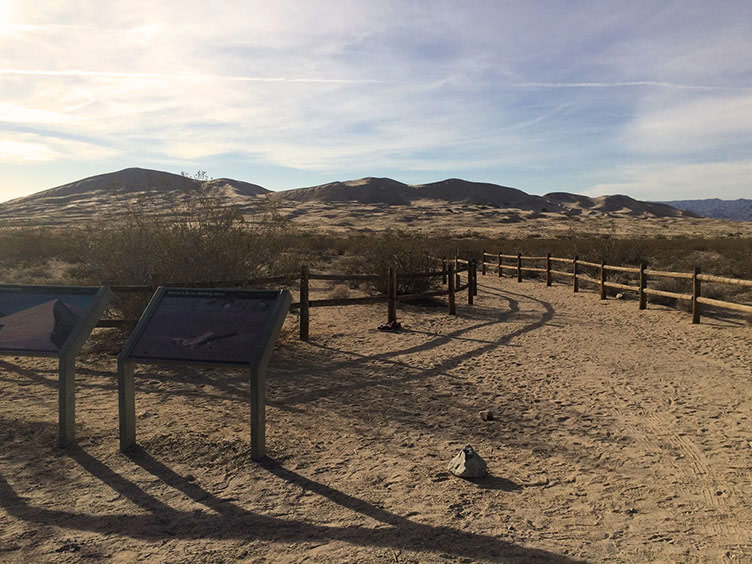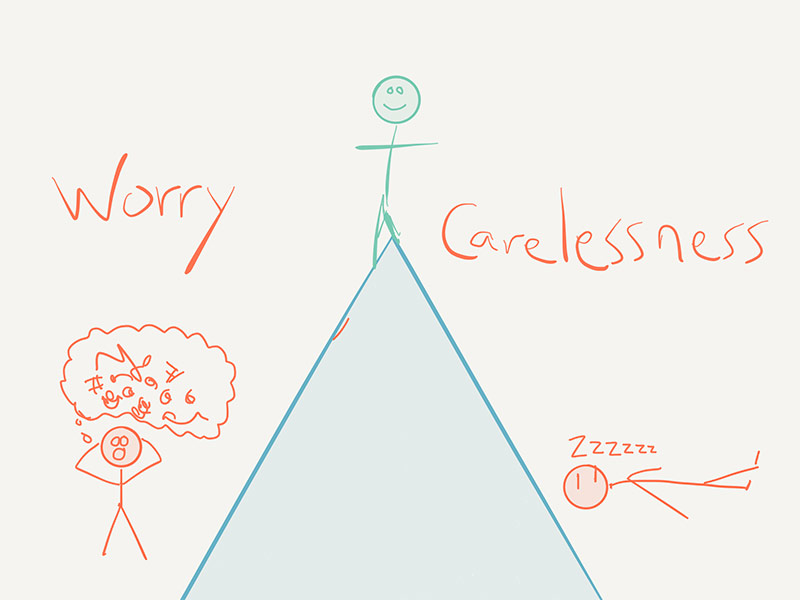Worry Better
This summer my wife and I went on a camping trip to the Mojave desert. To be honest, the desert isn’t really my thing. It’s hot, dry, and full of sad, dead-looking plants. But the desert does have one thing going for it: sand dunes.

It took me about 15 minutes to scramble up the face of the tallest sand dune, the one on the left in the picture. It was like nature’s StairMaster, every step I took forward caused a little sand-avalanche beneath my feet. But I reached the top just as the sun was going down, and I was handsomely rewarded for the effort. The dunes were illuminated from the west side by the setting sun, and they glowed a majestic orange right up to the peaks. The east side of the dunes was covered in a deepening shadow. I felt like Lawrence of Arabia as I straddled the divide.
My brain is very visually oriented, and I often understand ideas in terms of pictures. One of the pictures that helps me understand the world is this image of balancing on a narrow ridge, much like the top of the those dunes. On either side of the ridge are two dangers, opposite from each other, but each one deadly in its own way.
The dangers I’ve been thinking about lately are, on the one hand, worry, and on the other hand, carelessness.

I’ve been thinking about how any particular problem requires a certain amount of thought-time to deal with, and I can err by over-thinking the problem (worry) or under-thinking it (carelessness). The ideal, I guess, is to think about each problem exactly as much as I need to in order to decide the next action step, and then to think of it no more.
One of the books that has helped me understand how much mental energy is wasted on fruitless worrying is a productivity book written by David Allen called Getting Things Done. Allen’s central thesis (if I may summarize) is that we let our projects and tasks swarm around our brain like hundreds of fruit flies, constantly distracting us from the task at hand. His solution is to capture each of these ideas by writing them down in a trusted place, and to frequently review this list and determine what is the next action step for each project.
This book is brilliant, and it has many many useful tips and tricks, but in terms of worry it has helped me understand that beyond a certain point thinking about a problem isn’t useful. My tendency is to start slipping down the “Worry” side of the slope, letting my mind buzz with thoughts of what I need to do and how I need to do it. For me, in order to achieve balance, I have to try to heave myself over into “Carelessness.” That is, in order to be normal I have to try to be careless. Like a car that’s out of alignment, I will naturally drift over to worry if I don’t intentionally steer in the other direction. Once I’ve written down what I need to do next, additional mental energy just goes to waste.
So, my goal this week is to think about each problem or task just long enough to decide what action I need to take, write down the action, and then let it go. I may not ever stop worrying completely, but I’d like to worry better, to worry more productively, and eventually to worry less.
